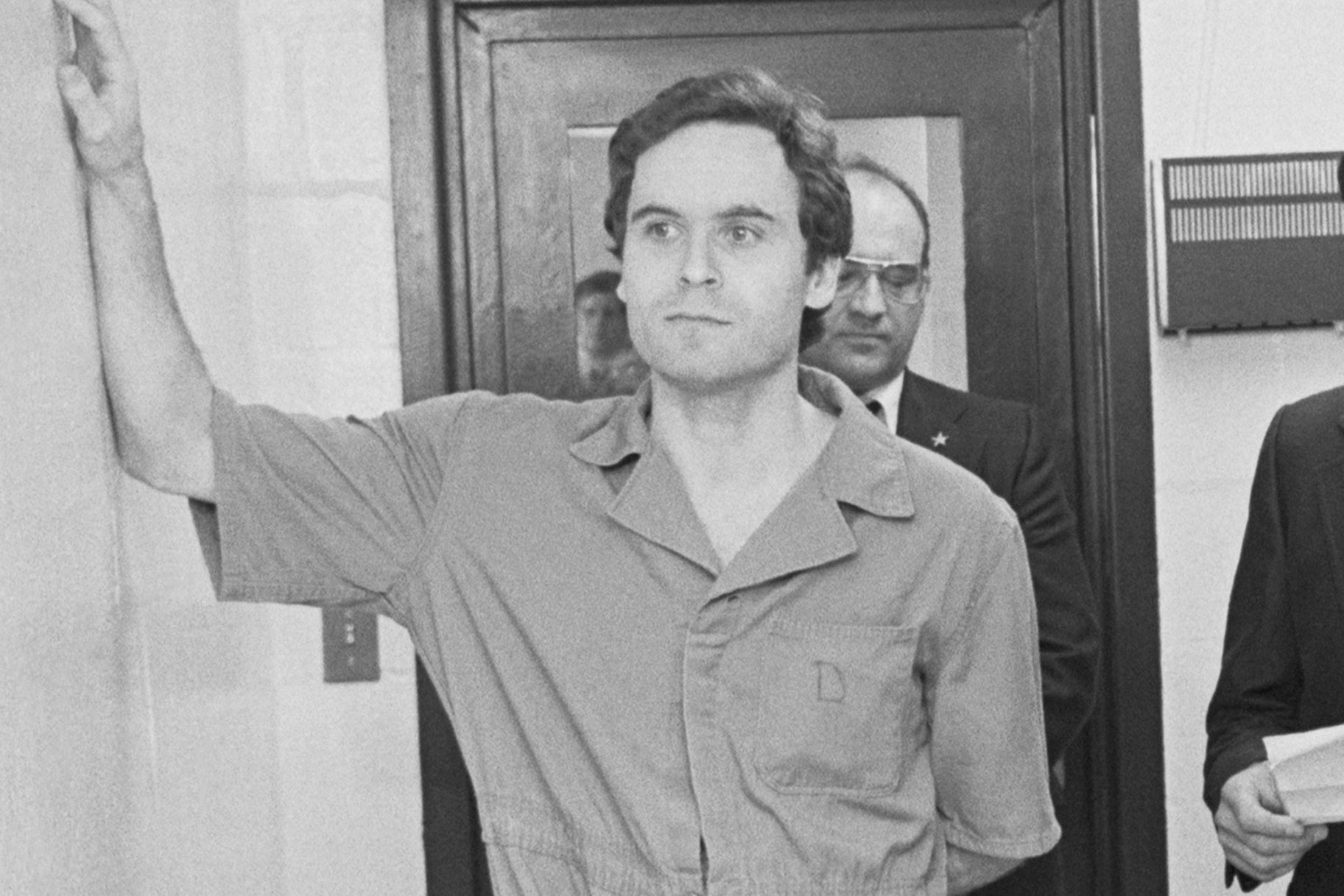Unraveling The Dark Truth: Child Ted Bundy's Story That Shook The World
When you dive into the chilling world of infamous serial killers, Ted Bundy's name always surfaces like a dark shadow. But what about the story of child Ted Bundy? Yes, the young version of the man who would later become one of history's most notorious figures. Today, we're peeling back the layers of his early life to uncover the formative years that shaped the monster he became. Get ready because this is going to be a wild ride.
Picture this: a seemingly ordinary kid growing up in the 1940s and '50s. Who would’ve thought that beneath the surface of this young boy lay the seeds of a serial killer’s psyche? The story of child Ted Bundy is not just about understanding a criminal mind; it's about exploring the factors that turn a child into a predator. Let’s dig in.
Now, buckle up because we’re about to explore the early days of Ted Bundy's life, the environment he grew up in, and the pivotal moments that shaped his future. This isn’t just a story; it’s a deep dive into the psychology of one of the darkest minds in history. So, are you ready to uncover the truth?
Early Life: Where It All Began
Let’s rewind the clock to Ted Bundy’s early years. Born on November 24, 1946, in Burlington, Vermont, little Ted was raised in a world that seemed normal enough from the outside. However, the circumstances surrounding his birth were far from ordinary. Ted was born out of wedlock, and his mother, Eleanor Louise Cowell, raised him believing his grandparents were his parents. Crazy, right?
His childhood wasn’t exactly a fairytale. Growing up in a household where the truth about his biological family was hidden, Ted faced emotional challenges that would later shape his worldview. This secrecy and the stigma of being born out of wedlock during that era likely played a significant role in his psychological development. Imagine carrying that weight as a kid—pretty heavy stuff.
Family Dynamics and Emotional Turmoil
Now, here’s where things get interesting. Ted’s relationship with his family, especially his grandparents, was complex. They were strict and, according to some accounts, emotionally distant. Can you imagine being a kid trying to navigate life in a household like that? It’s like walking on eggshells every day. This environment may have contributed to his difficulties forming healthy relationships later in life.
On top of that, the pressure of maintaining a perfect facade added to the emotional turmoil. Ted’s early years were marked by a constant struggle to fit in and meet societal expectations. Sound familiar? Many kids face similar challenges, but for Ted, it seemed to take a darker turn.
The School Years: A Closer Look
Let’s talk about Ted’s school life. Picture a kid trying to fit in with his peers but struggling to connect on a deeper level. Ted was reportedly an average student who didn’t excel academically. However, he had a knack for charm and charisma, even at a young age. That charm would later become one of his deadliest weapons.
His social interactions were complex. While he seemed friendly on the surface, there was always something a bit off about Ted. He struggled with forming genuine connections, often preferring to keep people at arm’s length. This detachment might have been a coping mechanism for the emotional turmoil he faced at home.
Challenges and Triumphs
Despite the challenges, Ted showed glimpses of brilliance. He was a voracious reader, devouring books on a wide range of topics. This intellectual curiosity might have been a way for him to escape the difficulties of his reality. Who wouldn’t want to lose themselves in a good book when life feels like a mess?
But let’s not forget the darker side. Ted’s early fascination with crime and punishment was evident. Some accounts suggest he had a collection of detective magazines and crime novels, hinting at the interests that would later dominate his life. Spooky, right?
Psychological Development: Unveiling the Mind of a Child Ted Bundy
Now, let’s dive into the psychological aspects of child Ted Bundy. What shaped his mind? Was it nature or nurture? The answer, as always, lies somewhere in between. Ted’s early exposure to trauma and secrecy likely played a significant role in his psychological development.
Experts have speculated that his inability to form healthy attachments and his need for control stemmed from his childhood experiences. Imagine growing up in a world where trust is elusive and emotions are suppressed. It’s no wonder Ted’s mind took a darker path.
Key Psychological Factors
One of the key factors in Ted’s psychological development was his need for validation. As a child, he craved approval and recognition, often going to great lengths to achieve it. This need for validation would later manifest in his interactions with victims, where he sought to control and dominate.
Another crucial element was his fascination with power and manipulation. From a young age, Ted showed an interest in understanding human behavior and exploiting it to his advantage. This early interest in psychology and human nature would later become one of his most lethal traits.
Environmental Influences: The World Around Him
Ted’s environment played a significant role in shaping his worldview. Growing up in the post-war era, he was exposed to societal norms and expectations that were vastly different from today’s standards. The pressure to conform and succeed was immense, and Ted felt it deeply.
His surroundings also included elements of crime and punishment, as mentioned earlier. The detective magazines and crime novels he collected were a reflection of the world he was drawn to. It’s like he was preparing for something, though he probably didn’t realize it at the time.
Cultural and Social Context
The cultural and social context of the time also influenced Ted’s development. The 1950s were a period of conformity and strict moral codes. Deviating from the norm was frowned upon, and Ted felt the weight of these expectations. It’s no wonder he struggled to find his place in the world.
Additionally, the media’s portrayal of crime and criminals likely had an impact on his perception of justice and morality. Think about it—how many times have you been influenced by what you’ve seen or read? For Ted, these influences may have been more profound than for most people.
Formative Experiences: Key Moments in His Life
Let’s talk about some key moments in Ted’s life that shaped his future. One of the most significant events was his move to Tacoma, Washington, with his mother and stepfather. This move marked a new chapter in his life, where he was exposed to different environments and people.
During this time, Ted’s fascination with crime and psychology deepened. He began to explore these interests more seriously, often immersing himself in books and discussions about the subject. It was like he was building a foundation for the man he would become.
Influential People and Events
Several people and events influenced Ted’s development. His relationship with his stepfather, Johnnie Bundy, was complex. While Johnnie was supportive and encouraging, their bond was never as strong as Ted might have hoped. This lack of a deep connection may have contributed to Ted’s later struggles with forming meaningful relationships.
Another influential event was Ted’s exposure to the legal system. As a teenager, he worked at a local law firm, gaining firsthand experience with the justice system. This experience likely fueled his interest in law and crime, setting the stage for his future career as a law student.
Exploring the Dark Side: Early Warning Signs
Now, let’s talk about the early warning signs. Was there something in Ted’s childhood that hinted at the man he would become? Some accounts suggest there were signs, though they may not have been obvious at the time.
For instance, Ted’s fascination with crime and punishment was evident from a young age. His collection of detective magazines and crime novels was just the tip of the iceberg. Beneath the surface, there were deeper issues at play, issues that would later manifest in his adult life.
Behavioral Patterns and Traits
Ted’s behavioral patterns and traits were shaped by his early experiences. His need for control, his fascination with power, and his inability to form healthy attachments were all signs of a mind that was heading down a dark path. But who could’ve predicted the monster he would become?
It’s important to note that not all kids who show these traits grow up to be serial killers. However, in Ted’s case, the combination of factors—environmental, psychological, and social—created the perfect storm.
Legacy and Impact: The Story of Child Ted Bundy
So, what can we learn from the story of child Ted Bundy? It’s a cautionary tale about the impact of early experiences on a person’s development. It’s a reminder that the choices we make as a society can have lasting effects on individuals.
Ted’s story is also a call to action. By understanding the factors that contribute to criminal behavior, we can work towards creating a safer, more supportive environment for children. Imagine a world where kids like Ted get the help they need before it’s too late.
Lessons for the Future
The lessons from Ted’s story are clear. Early intervention and support can make a world of difference. By addressing the root causes of behavioral issues, we can prevent the rise of future predators. It’s not just about stopping crime; it’s about fostering a society where everyone has the opportunity to thrive.
As we reflect on the story of child Ted Bundy, let’s remember that every child deserves a chance. It’s up to us to create the conditions that allow them to succeed rather than fail.
Conclusion: The Final Thoughts
In conclusion, the story of child Ted Bundy is a complex tapestry of factors that shaped the man he became. From his early life to his psychological development, every aspect played a role in his transformation into one of history’s most notorious figures.
As we close this chapter, let’s take a moment to reflect on the lessons we’ve learned. By understanding the root causes of criminal behavior, we can work towards a future where every child has the opportunity to succeed. So, what’s next? Share your thoughts in the comments, and don’t forget to check out other articles on our site. Together, we can make a difference.
Table of Contents
- Early Life: Where It All Began
- Family Dynamics and Emotional Turmoil
- The School Years: A Closer Look
- Challenges and Triumphs
- Psychological Development: Unveiling the Mind
- Key Psychological Factors
- Environmental Influences: The World Around Him
- Cultural and Social Context
- Formative Experiences: Key Moments in His Life
- Influential People and Events
- Exploring the Dark Side: Early Warning Signs
- Behavioral Patterns and Traits
- Legacy and Impact: The Story of Child Ted Bundy
- Lessons for the Future
- Conclusion: The Final Thoughts

Pictures of Ted Bundy

Ted Bundy Biography, Crimes, Death, & Facts Britannica

Ted Bundy Background My XXX Hot Girl